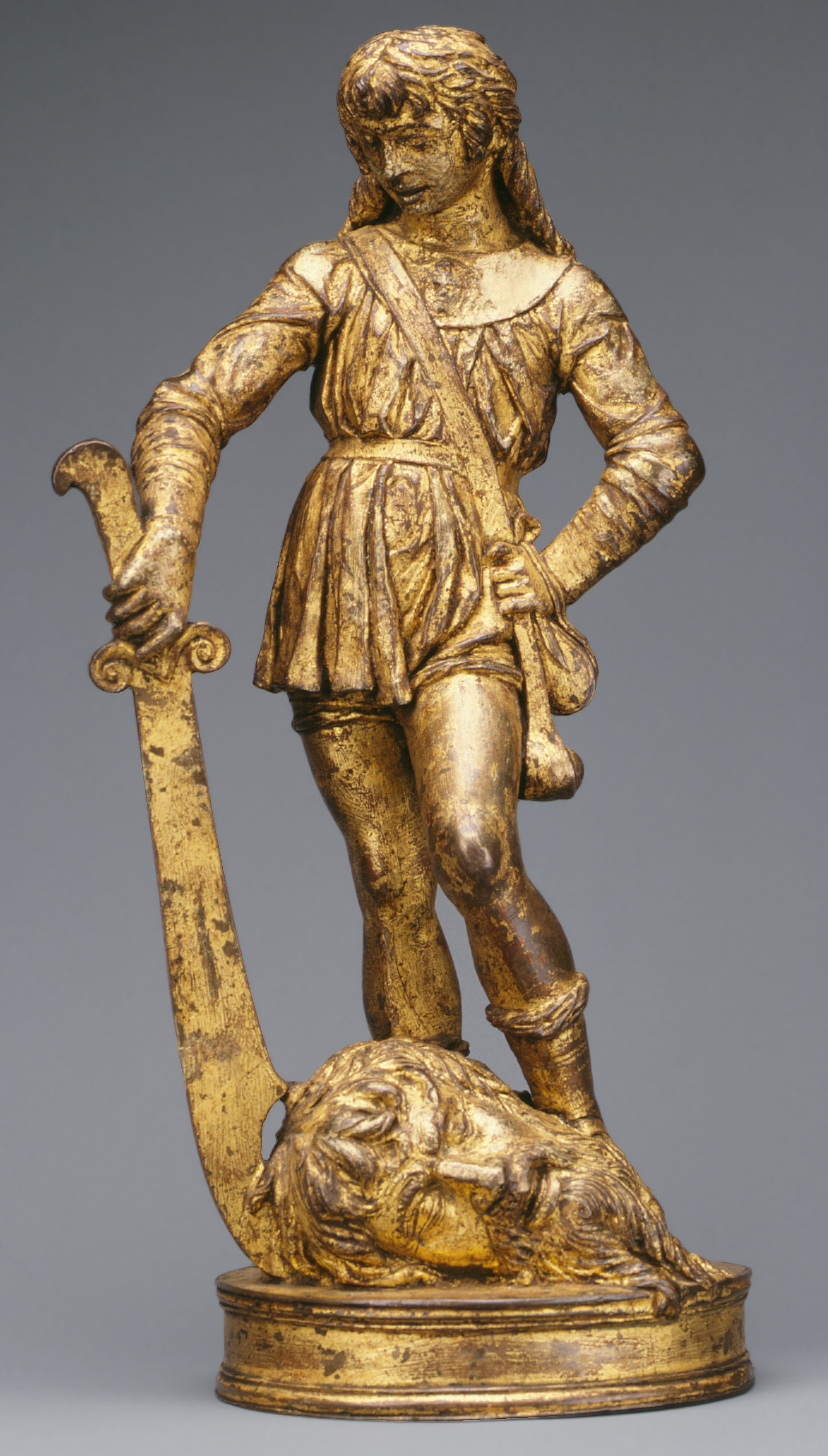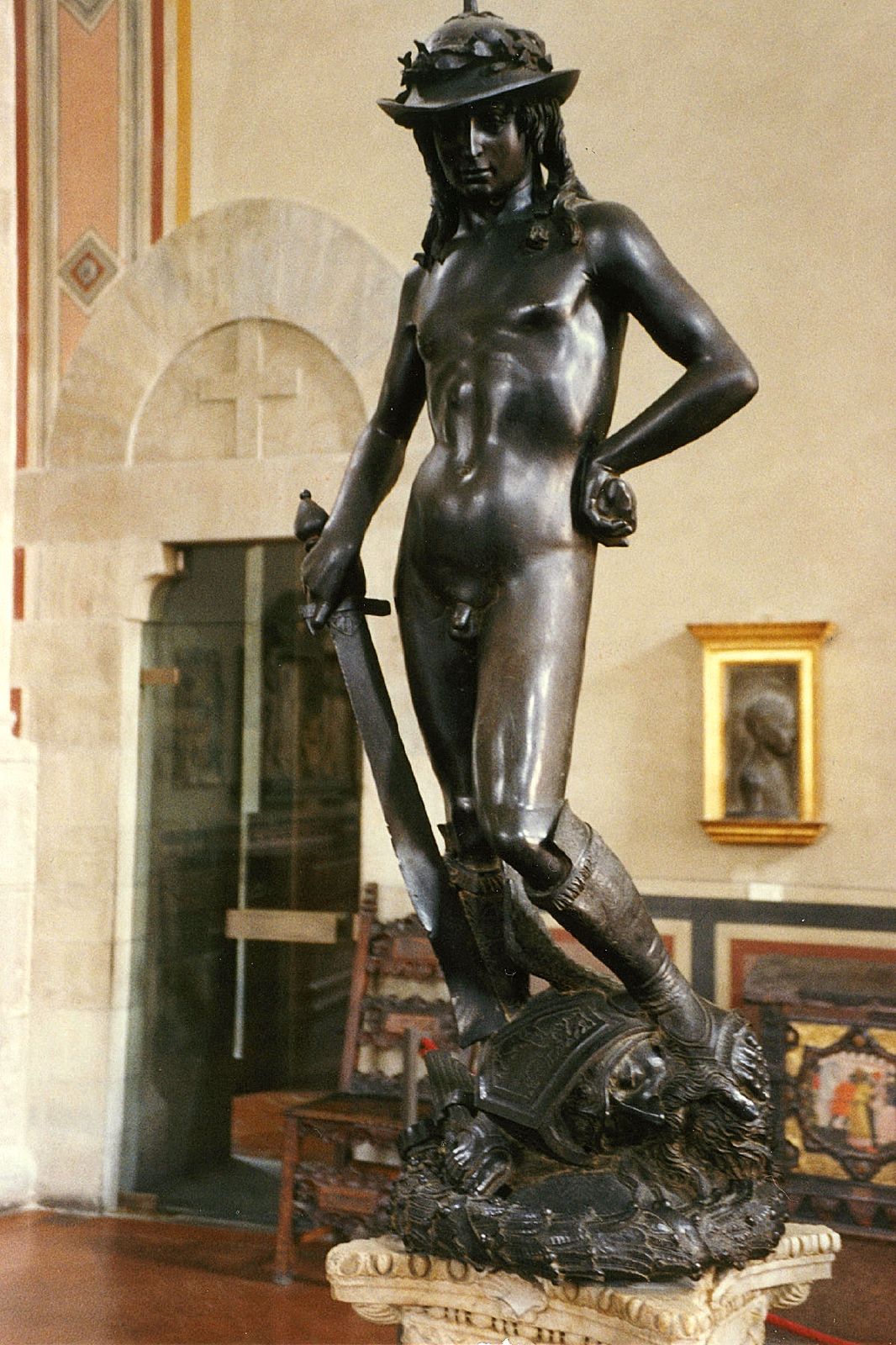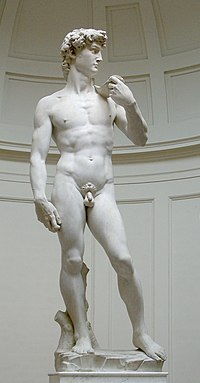One of my most favorite things about this class is my recently developed knowledge of history’s art and my new ability to make connections between pieces across time periods. When I recently visited the Met, I found myself experiencing this very feature. On display in the European Sculpture and Decorative Arts exhibit is an exquisite oil-gilded statue of David titled David with the Head of Goliath. Sculpted out of bronze by Italian artist Bartolomeo Bellano in the 15th century, the sculpture immediately made me think of Donatello’s famously bronze David (1425-1429). I was pleased to learn that Bellano was indeed one of Donatello’s disciples. Looking at the two together it is evident that Donatello set the path for Bellano’s later sculpture.

Bellano's David, David with the Head of Goliath, (1470–80)

Donatello's David, David1425 -1429
But Donatello and Bellano are certainly not the only artists who have attempted to depict David. Michelangelo and Bernini, amongst others, created magnificent portrayals of the biblical figure. What is interesting to learn, though, is the effect of each artists’ respective time periods on their depictions. Looking into these artists’ history explains some very important aspects of their work.
Italy was flourishing in the 15th century. As the Italian Renaissance continued to shape the culture of Florence, much of the art produced was commissioned by the civil government, courts, and wealthy individuals, most notably the Medici family. Around 1430, Cosimo de’ Medici commissioned Donatello’s David. The first freestanding nude sculpture since classical antiquity, David is evidence of Donatello’s revival of ancient Greece and Rome’s love and respect for the body. The Middle Ages was a period when the focus was on G-d and the soul, so artists rarely represented the nude. David’s contrapposto position, originated by the ancient Greeks, gives the sculpture a sense of movement, unlike the stance of the traditional male figure. David’s right leg is pushed up, causing the wing of Goliath’s helmet to ride up his left thigh. The beginnings of Humanism are apparent, as Donatello forms David’s body with his pioneered shallow relief technique. Donatello’s choice of bronze, the nudity, and contrapposto pose emulate the Humanist antique.
Donatello’s novel young figure of David embodies the ideals and concerns of 15th century Italy. At about five feet tall, David symbolized the Republic of Florence. Donatello stressed David’s victory as a sole result of G-d’s influence; David’s youth, slender physique, boyish expression, and rock in his left hand portray the slaying of Goliath as a direct result of Divine Intervention. The Florentine people saw their success in defeating their enemy, the Duke of Milan, in the early 15th century as the hand of G-d. Florence was a mercantile republic, as opposed to Milan, which was a military power and autocracy. David became the symbol of the Florentine Republic and peace, while Goliath took on the role as the Duke of Milan.

Michelangelo's David, David, 1504
At the height of Humanism in the High Renaissance, Michelangelo created his David. Michelangelo’s David differed from Donatello’s in its adolescent physique and absence of Goliath’s head. David’s marble face, tense and ready for combat, bulging veins in his right hand, yet contrapposto pose suggest that David is portrayed after he has made the decision to fight Goliath, yet before the battle has actually begun. David’s serenity of conscious choice prior to dangerous action is consistent with Renaissance ideals.
Michelangelo’s David embodies the fully developed Renaissance idea that man is G-d like because he is created in G-d’s image. David’s perfectly chiseled tendons and uninterrupted contour depict strength and wrath, Florence’s two most important virtues, as it had just cast the ruling of the Medici family. The Florentine people immediately identified with the colossal David as a shrewd hero over superior enemies.

Bernini's David, David, 1623-1624
There is no time for contemplation in Bernini’s David. Actively fighting Goliath, this David challenges the conventions of time and space. Michelangelo and Donatello’s Davids are serene and pensive; Bernini captures David in his moment of action. The path to G-d during the Renaissance was through the mind; Michelangelo and Donatello’s Davids ask the viewer the contemplate the beauty of man, G-d’s greatest creation, which will lead the viewer to an understanding of G-d. However, in the Baroque era, the path to G-d was more direct, emotional, and bodily. Baroque art dares its viewers to relate to the image in our bodies, not just our minds. Bernini’s David is actively involved in its surrounding space. The viewer must walk around it on all sides to experience its full effect. David’s toes literally step of the plinth. The contour of his body is crossed by his twisting cloth, the line of his neck, his bending arm, and the sling across his chest, heightening the spiraling of his body. Bernini forms David like a wound spring, while paying attention to the realism of the body. The visual tension creates deep shadows and intense illumination, typical of Baroque style.
Nowadays, we tend to think that art is only good if it is new and innovative. But these artists attest to the timeless artistic practice of learning from others and perfecting their work.

